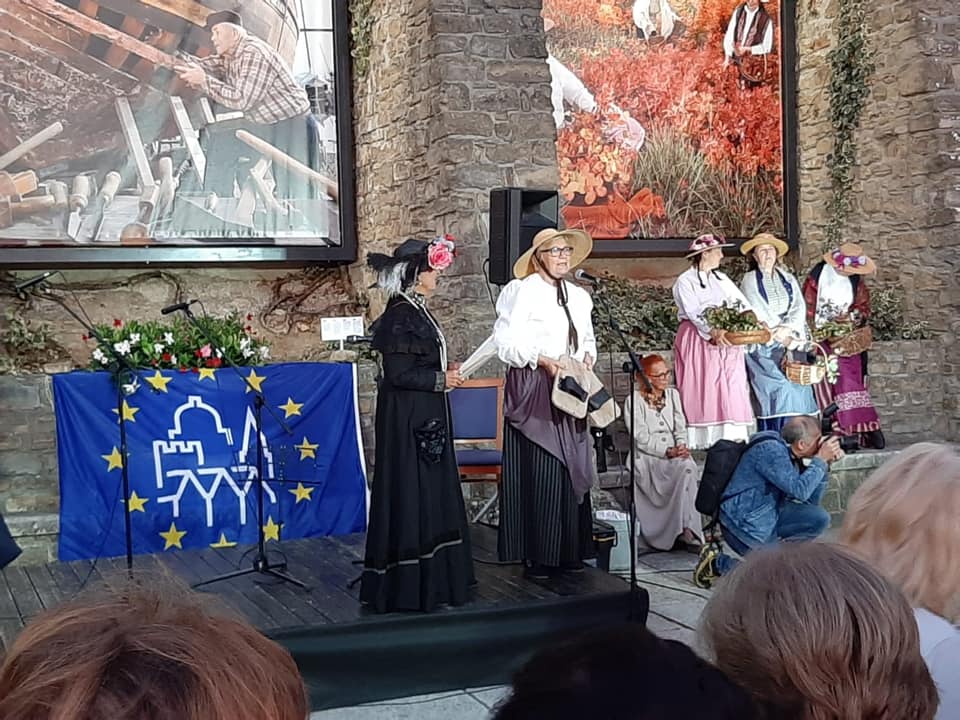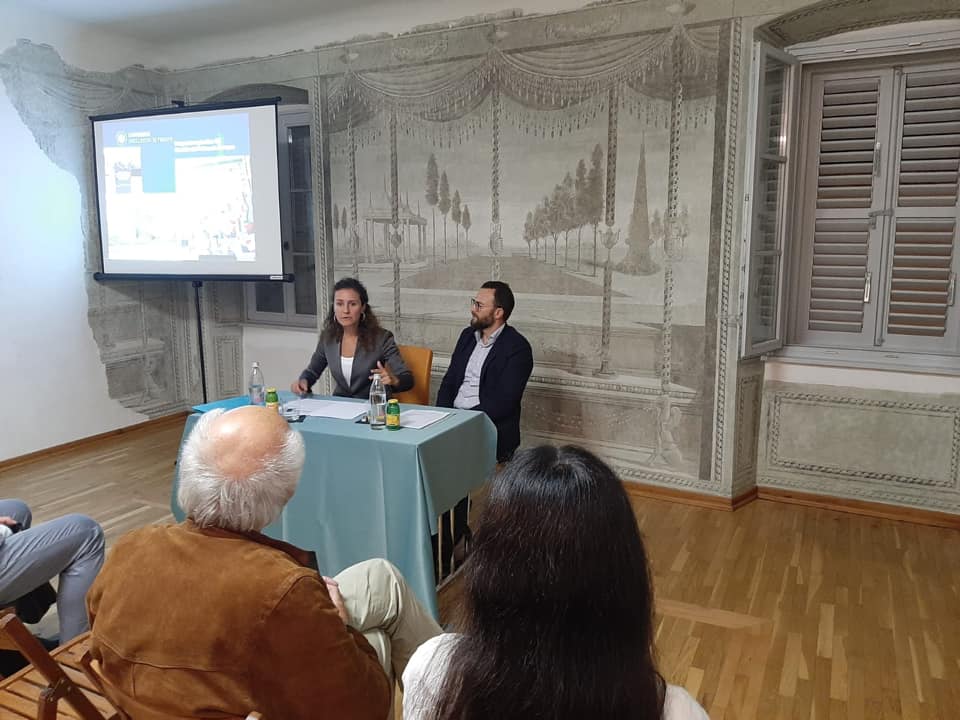Arte contesa

Passeggiata e sguardo nel tempo
10/06/2019FONS – Festa d’ottobre dei nostri sapori
10/08/2019
Venerdì 4 ottobre 2019 si è tenuta in Casa Tartini la conferenza della Prof.ssa Francesca Fiorentini dell’Università di Trieste, “Arte contesa: traffici illeciti e restituzione delle opere d’arte trafugate”. La presentazione è stata curata da Andrea Bartole, presidente della CAN di Pirano.
Durante la conferenza la prof.ssa ha presentato la problematica delle opere d’arte trafugate dai rispettivi paesi d’origine, un problema che ancora oggi anima le questioni a livello nazionale e locale, nonostante negli ultimi anni si sia fatto un passo avanti per trovare una soluzione che potrebbe mettere fine alle dispute diplomatiche.
La relatrice si è poi soffermata su alcuni tra i casi più conosciuti di opere d’arte che sono state al centro di scontri diplomatici e sulla questione del ritorno delle opere che in periodi di guerra sono state portate via.
Una tappa fondamentale del diritto che regola la tutela dei beni artistici in tempo di guerra è stata la Convenzione dell’Aia del 1954, che stabilisce che i beni non devono essere trafugati durante il periodo bellico; se per caso questo è stato fatto, i beni devono essere restituiti. Il problema di questa legge però è che non si può far valere nei casi precedenti, prima della firma della Convenzione.
Il diritto quindi varia a seconda dei casi e del tempo e ciò implica un problema per la restituzione di quelle opere d’arte rubate dai nazisti. In molti casi è stata importante la posizione dell’opinione pubblica.
Prima della conclusione la professoressa ha esposto anche il problema delle opere che sono state trafugate dall’Istria e la relativa contesa tra Italia e Slovenia. Come ha spiegato, il problema principale sta nella legge stessa poiché in tempo di guerra ogni stato ha l’obbligo di spostare e mettere al sicuro i suoi beni artistici, così come ha fatto l’Italia all’inizio del secondo conflitto mondiale, portando via le opere da un territorio che a quei tempi faceva parte del suo territorio nazionale. A complicare ulteriormente la soluzione della disputa ci sono state alcune tendenze a livello locale e nazionale in Slovenia. La Slovenia infatti avrebbe voluto collocare le opere che sarebbero tornate a Lubiana, facendole diventare simbolo della cultura slovena. Mossa chiaramente contestata dalle comunità italiane dei luoghi d’origine dei beni, dove si percepiscono ancora ricordi dolorosi legati al passato storico. La professoressa Fiorentini ha ancora sottolineato che le opere contese non appartengono all’Italia, né alla Slovenia né alla Croazia, poiché sono state realizzate durante il periodo della Repubblica di Venezia.
Stando a questi argomenti, la Slovenia e Pirano non hanno il diritto di riavere le opere, ma si può lavorare per trovare una soluzione comune che prevalga sul diritto.
“Prevale sempre di più l’idea che l’arte sia un bene di tutti e non appartenga al singolo o a un gruppo di persone, ma a tutta l’umanità”, ha concluso la professoressa Fiorentini.
—
Skupnost Italijanov Giuseppe Tartini Piran je v petek gostila prof. Francesco Fiorentini s tržaške univerze, ki je zbranemu občinstvu v Tartinijevi hiši predstavila problematiko odtujenih oz. ukradenih umetnin, ki še danes burijo duhove tako na državni kot lokalni ravni, saj se enotna rešitev, ki bi pomenila konec mnogim diplomatskim sporom, kljub poglobljenim prizadevanjem v zadnjih letih še vedno odmika.
Profesorica Fiorentini je predstavila nekaj najbolj znanih primerov reševanja tovrstnih umetniških sporov, ob katerih so se skozi zgodovino oblikovala različna stališča do vprašanja vrnitve umetnin, ki so vodila do pozitivnih ali negativnih pravnih razsodb.
Prvi pomemben mejnik v pravni ureditvi ravnanja v primeru zasežene, odtujene ali ukradene kulturne dediščine je predstavljala Haaška resolucija leta 1954, s katero so določili, da se umetniških del v tujih državah ne sme odtujiti, če pa je to bilo storjeno, jih je treba vrniti. Težava je bila v tem, da zakona ni bilo mogoče uveljaviti za nazaj.
Tako se pravne podlage razlikujejo glede na okoliščine in čas, ko so bila dela odvzeta, kar povzroča največ težav pri vprašanju restitucije del, ukradenih v času nacistične vojne vihre. Gostja je izpostavila, da je pri mnogih primerih na odločitev vplivalo prav javno mnenje.
Ob zaključku predavanja se je profesorica dotaknila tudi problematike odtujenih del iz Istre in spora med Italijo in Slovenijo. Kot je pojasnila, je ključna težava v pravni podlagi za odtujitev, za katero je značilno, da ne zastara. Po mednarodnem pravu je namreč vsaka država v primeru vojne dolžna zaščititi svoja umetniška dela in jih preseliti na varno, če jim grozi nevarnost. Italija jih je prenesla ob vstopu v drugo svetovno vojno z območja, ki je bilo v tistem času del njenega nacionalnega ozemlja.
Reševanje spora so dodatno zapletle nasprotujoče si težnje na državni in lokalni ravni v Sloveniji. Slovenska oblast je namreč predlagala, da bi se vrnjena dela hranila v Ljubljani, kot simbol slovenske kulture, čemur so nasprotovale lokalne skupnosti, ki so predlagale, da se dela vrnejo v kraje izvora. Slednji rešitvi pa so se uprli v italijanskih lokalnih skupnostih, kjer trdijo, da bi bila vrnitev del v kraje, ki jih je bilo italijansko prebivalstvo primorano zapustiti, še zadnji žebelj v krsto, v kateri še vedno brbotajo boleči spomini. Fiorentinijeva je ob tem izpostavila, da “sporna” umetniška dela ne pripadajo ne Italiji ne Sloveniji ne Hrvaški, saj so nastala v času Beneške republike.
Slovenija in Piran torej nimata pravice do vrnitve odtujenih del, je povzela gostja, a hkrati vsem prisotnim položila na srce, da lahko prizadevanja za skupno rešitev prevladajo nad pravnimi argumenti.
“V svetu se vse bolj uveljavlja ideja o umetnosti kot javnem dobrem, ki torej ne pripada posameznikom ali skupinam, temveč človeštvu,” je še dodala prof. Francesca Fiorentini.
Ecco le foto di Nataša Fajon.


